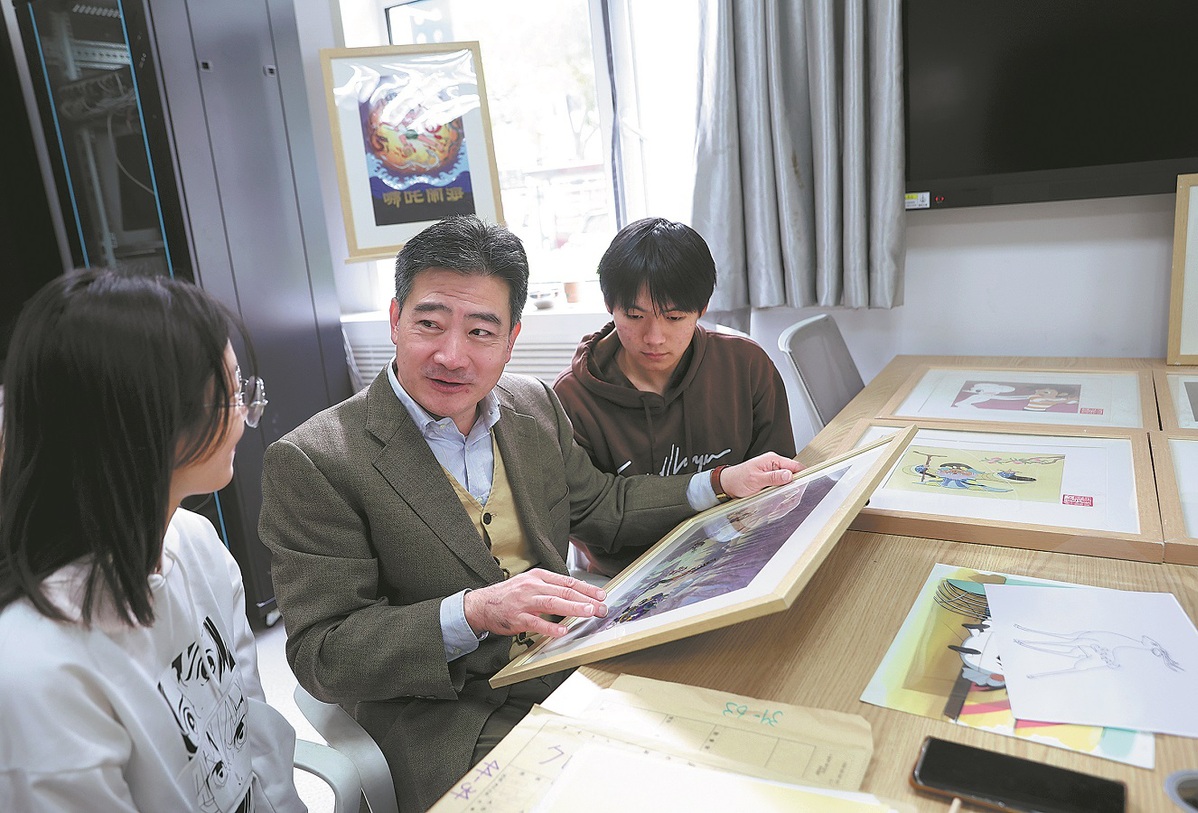Labor of love keeps old animation art form alive
Hand-painted celluloid revives golden days of early Chinese cinema


In the dimly lit corner of a modest studio, Zhao Lei leans over a large wooden desk as his fingers delicately trace the outline of a character on a translucent sheet of celluloid.
Zhao's meticulous craftsmanship and pursuit of perfection are keeping alive a technique nearly abandoned in the age of digital filmmaking.
Each frame of an animation is drawn by hand on transparent sheets known as cels. These cels are then layered over static backgrounds and photographed in sequence to create the illusion of motion.
"There is something in traditional animation that digital technology can never replicate," Zhao said. "It carries the soul of the artist, the touch of the hand, and that's something truly irreplaceable."
After Zhao completes the line work, the cels are painted on the reverse side, with acrylic or enamel paints used to color the character.
The image Zhao has drawn is a magical nine-colored deer, the lead figure in The Nine-Colored Deer, a 24-minute animated film produced by the Shanghai Animation Film Studio and released in 1981. Adapted from murals in Dunhuang Grottoes in Dunhuang, Gansu province, the film tells the story of a spiritual creature that saves a businessman from drowning in a river.
The studio, which celebrated its 60th anniversary in 2017, said a five-member creative team from Shanghai spent more than 20 days in Dunhuang, gaining inspiration for the film. Copying the murals, they drew about 20,000 pictures, with 200 of them chosen for film scenes.
"In cel animation, the final result — especially when it comes to how the colors and lines will look in the finished scene — isn't fully visible until the entire drawing and painting process is completed. This can make the technique particularly challenging and unpredictable for animators," said Zhao while coloring the deer image.
He said unpredictability of color, the drying process, and how different layers interact make cel animation both a beautiful and risky art form.
"It requires expertise, careful planning, and test shots to ensure the final result looks just as the animator envisioned. It's one of the reasons why traditional cel animation is considered such a time-intensive and delicate process," he said.
























